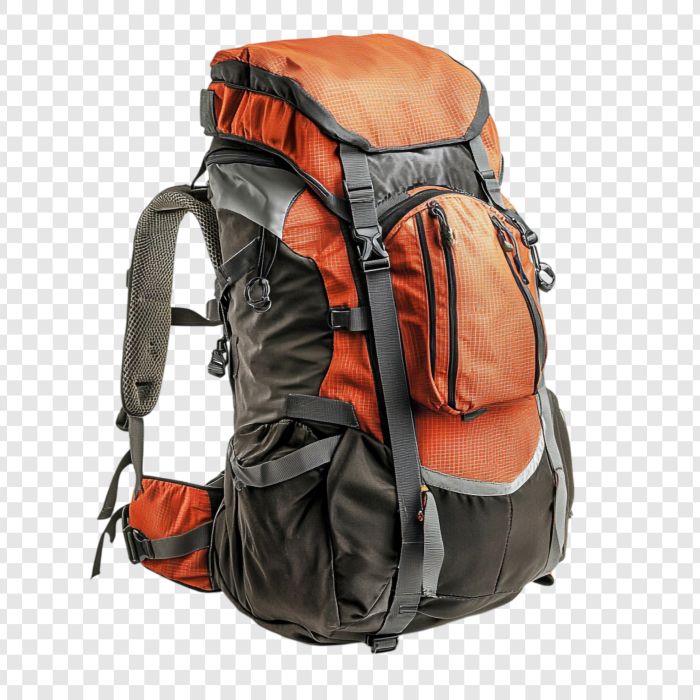
Preparing for a multi-day hike - Step 1: Physical training
Engaging in a multi-day hike is an exhilarating challenge, but also physically demanding. Careful and thorough preparation is essential to ensure a safe, enjoyable, and memorable experience. Two fundamental aspects must be addressed in depth: the development of a solid general physical condition to improve endurance, strengthen muscles and refine your technique, and the mandatory completion of test hikes, which make it possible to ensure the quality of your equipment, and to be prepared for real conditions.
Develop your physical condition
Hiking over several days is an activity that involves the whole body in an intense and prolonged way. To successfully meet this challenge, it is imperative to prepare yourself physically in an adequate and comprehensive manner. Here are the key components to work on:
- Cardio-Respiratory Endurance : Excellent cardio-respiratory endurance is the cornerstone of preparing for a multi-day hike. It will allow your body to withstand the prolonged and repeated effort of walking long distances, day after day. Beyond general recommendations, it is essential to incorporate endurance training sessions specific to hiking, such as hill running, mountain biking, or brisk walking with elevations. These exercises will specifically target and strengthen leg muscles, which are essential for walking in rough terrain. According to the recommendations of the World Health Organization (WHO), an adult should do at least 150 minutes of moderate-intensity physical activity per week. For hikers, aiming for 300 minutes may be more appropriate.
- Muscle building : Hiking puts a strain on not only the muscles of the legs, but also those of the back, core and arms (to carry the backpack). A comprehensive muscle-building program, including targeted exercises for these muscle groups, is essential. For example, squats with a moderate load (10-15 kg) and sets of 3x12 reps are ideal for strengthening the quadriceps and glutes, muscles that are essential for walking. Also, specific exercises to strengthen the stabilizing muscles of the trunk (lateral planks, balance exercises on one foot) will play a crucial role in maintaining correct posture and avoiding injuries when walking on uneven terrain with a load. At a minimum, it is of course essential to walk very regularly at least 1 hour per day. Some muscles used during a hike are different from those used in other sports. Good flexibility and balance are valuable assets to prevent injuries and to evolve safely on technical trails. To improve flexibility, combine static and dynamic stretching exercises, such as big beats, arm circles, and core rotations. For balance, practice challenging exercises such as standing on one leg with your eyes closed, stepping on a beam on the ground, or using an unstable balance pad.
- Bag carrying training : Carrying a heavy backpack for long periods of time can be extremely taxing on the body. It is crucial to prepare for it gradually by integrating training walks with a loaded backpack. Start with a light load of 5 kg, then gradually increase the weight until you reach the expected load for your hike (usually between 10 and 15 kg). Remember to adjust straps and padding regularly for optimal comfort and balanced weight distribution. Obviously, it is recommended to invest in a good quality bag.
Do test hikes
Beyond general physical condition, test hikes are a crucial step that should not be overlooked in preparation. They allow you to test your stamina, your equipment and to get used to the real conditions of hiking over several days. Test hikes offer the opportunity to test all the equipment designed for hiking in real conditions. Wear the shoes, clothes, and rucksack that you will be using, and make sure that they are a perfect fit, well-worn, and comfortable. Never go on a long hike with new shoes that haven't already been worn several times. Identify and correct any potential points of friction or discomfort to avoid blisters, skin irritations, or muscle pain. Test hikes are the perfect opportunity to thoroughly assess how your body reacts to prolonged exertion and hiking conditions. Pay attention to warning signs, such as persistent pain, blisters, excessive fatigue, or breathing difficulties. Carefully note areas of pain or tension and adapt your training program accordingly. If necessary, do not hesitate to consult a health professional to avoid serious injuries and to adjust your preparation.
It is highly recommended that you plan at least one full-day trial hike and then progress to a two-day hike with an overnight stay in a bivouac. This will allow you to simulate as closely as possible the real conditions you will encounter, including fatigue management, camp set-up, outdoor meal preparation and recovery. Feel free to include additional challenges, such as particularly steep or technical sections of the trail, or even a day of walking in light rain to prepare yourself mentally and physically for potential unexpected events. If you find the time, taking the pace of at least 2 hikes per month over a full day is ideal. The key to successful preparation is slow, measured, and consistent progress. Start with short hikes of 5 to 10 km on moderate terrain and gradually increase the duration, distance and difficulty, listening carefully to your body's signals, up to hikes of 15 to 20 km and even much longer with greater differences in altitude. Don't be afraid to slow the pace, decrease the distance, or ease the load if necessary. A patient approach, adapted to your individual abilities, will allow you to approach your hike in great shape, confident and ready to take on this exciting challenge.
By following these detailed tips for comprehensive physical preparation, combining the development of a solid overall condition and the completion of crucial test hikes, you will greatly increase your chances of having a rewarding, safe, and unforgettable multi-day hiking experience in the heart of nature.
To go further:
Principles of physical preparation for hiking
Physical preparation: what training to go on a trek?







